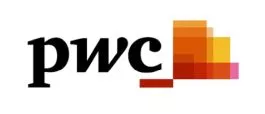- in European Union
- with readers working within the Metals & Mining industries
- within Employment and HR, Privacy and Environment topic(s)
QuickTake
On 15 September 2025, the European Central Bank (ECB), acting in its role at the head of the Single Supervisory Mechanism (SSM) pillar of the EU's Banking Union, launched a public consultation on new guidelines for dealing with non-performing exposures (NPEs) at less significant institutions (LSIs) (theLSI NPE Guidelines).1 The focus is on "so-called legacy NPEs", i.e., those which arose before 26 April 2019 and are therefore not covered by the automatic deduction rules of the Capital Requirements Regulation(CRR).2
The LSI NPE Guidelines are intended to create supervisory harmonisation for LSIs, as until now, guidelines for dealing with NPEs have mainly existed for systemically important institutions (SIs). In future, smaller institutions will also have to meet clear expectations regarding risk provisioning, governance and reduction plans.
The ECB-SSM makes it clear that national competent authorities (NCAs) will monitor the coverage of legacy NPEs more closely in future as part of the SSM-administered Supervisory Review and Evaluation Process (SREP). This will make the treatment of legacy NPEs an important part of ongoing supervisory relationships.
The current draft emphasises that even credit institutions without a hard Common Equity Tier 1 (CET1) deduction rule will face increased regulatory expectations in the future if their strategies and governance structures are deemed to be insufficient.3
This Client Alert assess the current draft of the LSI NPE Guidelines which will run under consultation until 27 October 2025. The final guidelines are expected to be published in the course of 2026 with a phased-in application through to 2028. Further analysis on the final guidelines will be covered in a separate Client Alert. As with previous ECB-SSM Guidelines on NPEs there are unlikely to be major changes between the current draft and the final guidelines and many LSIs(regardless of their current extent of NPEs) may want to take preparatory action to ensure compliance with these new streamlined SSM-wide supervisory expectations, in particular given also the current state of play, as explored in a separate Client Alert on the implementation of the EU's Credit Servicers Directive. This Client Alert should also be read in conjunction with further existing thought leadership available from our EU RegCORE on the NPE Guidelines and SSM supervisory expectations applicable to SIs.
Key takeaways from the draft LSI NPE Guidelines
Importantly, the consultation on the LSI NPE Guidelines does not focus on additional NPE indicators, but rather on the extent of supervisory control by the NCAs, as anchored in the SREP, and robust governance structures. As clarified in the draft, inadequate provisioning for legacy NPEs can be addressed through Pillar 2 measures (e.g. qualitative requirements, additional capital requirements), despite the lack of CET1 deductions under CRR.4
The aim of the draft LSI NPE Guidelines is to (i) achieve harmonised and proportionate supervisory practices for LSIs, building on the established approach for large institutions while (ii) contributing to the ECB-SSM's overarching aim of streamlining how the Single Rulebook for all types of credit institutions is supervised in practice across the Banking Union.
Key points to achieve these aims above are reflected in the LSI NPE Guidelines in the following focus areas:
- Proportionality: Exemptions or risk-based application for LSIs are available for those with low NPE ratios, low proportions of legacy NPEs or specific restructuring mandates; plus the option to exclude certain portfolios (e.g. securitisations).5
- Supervisory pressure: NCAs systematically review coverage in the SREP and can use Pillar 2 instruments to address gaps; the draft explicitly emphasises the use of the Pillar 2 framework to enforce uniform standards.
- Governance focus: LSIs' supervisory bodies and management must support the NPE strategy; purely departmental solutions are not sufficient. The legal basis and powers are derived from the CRD (including Articles 97 and 104; governance requirements in Articles 88 et seq.).6
Beyond the key points mentioned, the draft clearly pursues the goal of creating supervisory convergence for LSIs without (fully) depriving NCAs of the necessary discretion within the Pillar 2 framework. As is common with ECB-SSM Guidelines, the text explicitly addresses NCAs as the primary addressees, emphasises the SREP anchoring of the NPE assessments and the possibility of imposing qualitative requirements or capital surcharges on insufficient coverage strategies. This shifts the focus from 'rigid thresholds' to verifiable governance, risk and process standards.7
At the same time, the approach to be applied pursuant to the LSI NPE Guidelines is drafted in order for it to be risk-oriented and applied proportionately: NCAs can determine the target group annually on the basis of specific risk and context criteria; individual portfolios (e.g. securitisations) can be excluded. This flexibility is intended to avoid distortions and take account of different LSI profiles. In practical terms, this means that institutions that can convincingly demonstrate their governance, NPE strategy and data situation can steer the supervisory dialogue constructively and avoid targeted interventions.8
Another component is the data and reporting dimension: the ECB has announced a compact reporting template that is closely based on existing COREP reports. Together with a staggered roll-out by the end of 2028, this should make implementation manageable – but the political focus remains on embedding it in the ongoing SREP dialogue, not on introducing new hard deduction rules for old NPEs. The legal basis of the CRD (including Art. 97 (SREP), Art. 104 (Measures)) continues to serve as the foundation for governance and supervisory measures.9
Key considerations for implementing the LSI NPE Guidelines
For LSIs, the LSI NPE Guidelines, once they become final, identify several key areas for action that go beyond mere risk prevention. The ECB-SSM makes it clear that in future, the focus will be less on achieving fixed thresholds and more on the quality of strategies, governance and processes. This aim is unlikely to change between the current draft LSI NPE Guidelines and the final form that will be published.
Governance and board responsibility
The LSI NPE Guidelines require management and supervisory bodies to actively support the NPE strategy. Strategic decisions on reduction measures must not remain at the level of individual departments. The draft thus ties in with the governance requirements of CRD IV (Articles 88–91), which require a clear allocation of responsibilities and supervisory duties.10
Reduction strategies and implementation path
LSIs must develop transparent and comprehensible plans for reducing their legacy NPE portfolios in the medium term. The LSI NPE Guidelines refer to operational options such as restructuring, portfolio transactions or debt collection, which should be integrated into the credit institution's overall strategy. It is not only the plan itself that is crucial, but also the credibility of its implementation.
Risk management and reporting
Another focus is on reliable data and consistent reporting. As existing EU reporting requirements (e.g. Regulation (EU) 2021/451 on supervisory reporting) do not ensure complete coverage of legacy NPEs, the ECB is announcing supplementary templates that are closely aligned with COREP.11 For institutions, this means that their data management must be structured in such a way that it is robust for both internal purposes and for the SREP review by the supervisory authority.
Early and transparent communication with supervisors
The consultation emphasises the role of NCAs as the primary addressees and their discretionary powers. Credit institutions are therefore well advised to enter into dialogue with their supervisory authorities at an early stage in order to demonstrate the appropriateness and plausibility of their own strategies. Those who openly address deficits and present a robust reduction path can reduce the risk of more restrictive Pillar 2 measures.12
In summary, the LSI NPE Guidelines require LSIs to pay greater management attention, have clear reduction plans and improve their data. The ECB-SSM is thus deliberately shifting its, and by extension all SSM-participating NCAs', focus to qualitative standards and supervisory dialogues that go beyond the traditional key quantitative metrics. This approach follows the one taken already at the SI level.
Outlook
Once the LSI NPE Guidelines are finalised, it is very likely that further regulatory guidance can be expected in the initial phase. This could take the form of supplementary FAQs or explanatory notes from the ECB-SSM, specifying details on reporting formats, thresholds or exemptions. NCAs are also likely to clarify their practices through additional guidelines in order to standardise implementation in their SREP processes. Supervisory practice will further tighten expectations regarding the consistency, completeness and timeliness of coverage strategies in the future. LSIs that integrate the guidelines into their governance, risk management and reporting processes at an early stage set the bar high and reduce the risk of subsequent additional requirements from the NCAs.
For credit institutions, SSM-relevant supervisory guidance generally and the LSI NPE Guidelines specifically, are not merely a formal obligation, but a regulatory quality standard for dealing with NPEs. It requires LSIs to document reduction plans in a comprehensible manner, structure data sets reliably and clearly anchor responsibilities between management and supervisory levels. In view of the planned phase-in until 2028, it is advisable to carry out a timely gap check against the draft provisions and a trial run of the systems, processes and escalation channels as well as to assess the interoperability with other regulatory obligations such as but not limited to loan origination and monitoring requirements through to credit servicing standards are operationalised both within a LSI but also captured contractually across the product and operational lifecycle. It should be noted that the SSM's (and equally other EU authorities') policymakers take the view that credit institutions should not be shortsighted on the extent and speed of NPEs that can materialise on their balance sheets due to the current prevailing and when compared to the past very different macroeconomic and risk factors. Applying a more comprehensive approach to meeting the guideline's requirements and objectives, will reduce regulatory, reputational and enforcement risks and ensure that the expectations of the ECB-SSM and NCAs in the SSM-administered SREP are reliably met by respective credit institutions.
Footnotes
1. European Central Bank, Banking Supervision, PR.
2. EU Regulation No. 575/2013.
3. Guideline (EU) YYYY/XX** of the European Central Bank.
4. European Central Bank, Banking Supervision, PR,Directive 2013/36/EU.
5. European Central Bank, Banking Supervision, PR.
6. Guideline (EU) YYYY/XX** of the European Central Bank.
7. European Central Bank, Banking Supervision, PR.
8. Guideline (EU) YYYY/XX** of the European Central Bank.
9. Directive 2013/36/EU.
10. Directive 2013/36/EU.
11. Guideline (EU) YYYY/XX** of the European Central Bank.
12. European Central Bank, Banking Supervision, PR.
The content of this article is intended to provide a general guide to the subject matter. Specialist advice should be sought about your specific circumstances.
[View Source]


